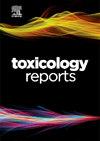微塑料在鱼类体内的生物积累:其对血液学、免疫反应、神经毒性、氧化应激、生长和生殖功能障碍的潜在毒性影响。
Q1 Environmental Science
引用次数: 0
摘要
微塑料暴露后,主要在鱼的内脏和鳃中进行生物积累,然后通过循环扩散并在其他组织中进行生物积累。鱼类的循环系统受到其组织中微塑料生物积累的影响,影响与免疫、渗透压、血液凝固、分子运输和脂肪代谢相关的许多血液学指标。大小、剂量、持续时间、食物消耗和种类等变量都会影响微塑料的生物积累和毒性,而不是接触途径。微塑料导致鱼类体内活性氧生成和抗氧化防御失衡,导致氧化损伤。此外,微塑料通过物理化学损伤影响免疫反应,从而产生神经毒性并改变乙酰胆碱酯酶的活性。微塑料暴露导致肝脏和肠道组织损伤,影响肠道屏障功能和微生物组成失调,改变宿主代谢,影响消化酶活性,最终影响鱼类生长性能。微塑料暴露以HPG轴为靶点,干扰性腺组织的甾体生成、细胞凋亡过程,最终导致生殖功能障碍。接触微塑料的鱼类具有一系列毒性作用,包括免疫、抗氧化和血液指标的改变、生物蓄积、神经毒性、生长和生殖功能障碍,本文通过不同的指标对这些毒性作用进行了研究。本文章由计算机程序翻译,如有差异,请以英文原文为准。
Microplastics bioaccumulation in fish: Its potential toxic effects on hematology, immune response, neurotoxicity, oxidative stress, growth, and reproductive dysfunction
After being exposed, microplastics mostly bioaccumulated in guts and gills of fish, then, through circulation, spread and bioaccumulated in other tissues. Circulatory system of fish is impacted by the microplastic bioaccumulation in their tissues, influencing a number of hematological indices that are connected with immunity, osmotic pressure, blood clotting, molecular transport and fat metabolism. Variables like size, dose, duration, food consumption and species, all affect the bioaccumulation and toxicity of the microplastic, rather than the exposure routes. Microplastics lead to an imbalance in the generation of ROS and antioxidant defense of fish, which resulting in oxidative injury. Moreover, microplastics affect immunological responses through physico-chemical damage, hence produce neurotoxicity and modifies the activity of the acetylcholine esterase. Exposure to microplastics caused damage to the hepatic and gut tissue, affect intestinal barrier function and dysbiosis of microbial composition, altered the metabolism of host, affecting the activities of the digestive enzymes, eventually affecting the growth performance of fish. Microplastics exposure target the HPG axis and interfere with the process of steroidogenesis, apoptosis of the gonadal tissue, ultimately causing reproductive dysfunction. Fish exposed to microplastics have a range of toxic effects viz. alteration to immune, antioxidant and hematological indices, bioaccumulation, neurotoxicity, growth and reproductive dysfunction, all were examined in this present review by using different indicators.
求助全文
通过发布文献求助,成功后即可免费获取论文全文。
去求助
来源期刊

Toxicology Reports
Environmental Science-Health, Toxicology and Mutagenesis
CiteScore
7.60
自引率
0.00%
发文量
228
审稿时长
11 weeks
 求助内容:
求助内容: 应助结果提醒方式:
应助结果提醒方式:


